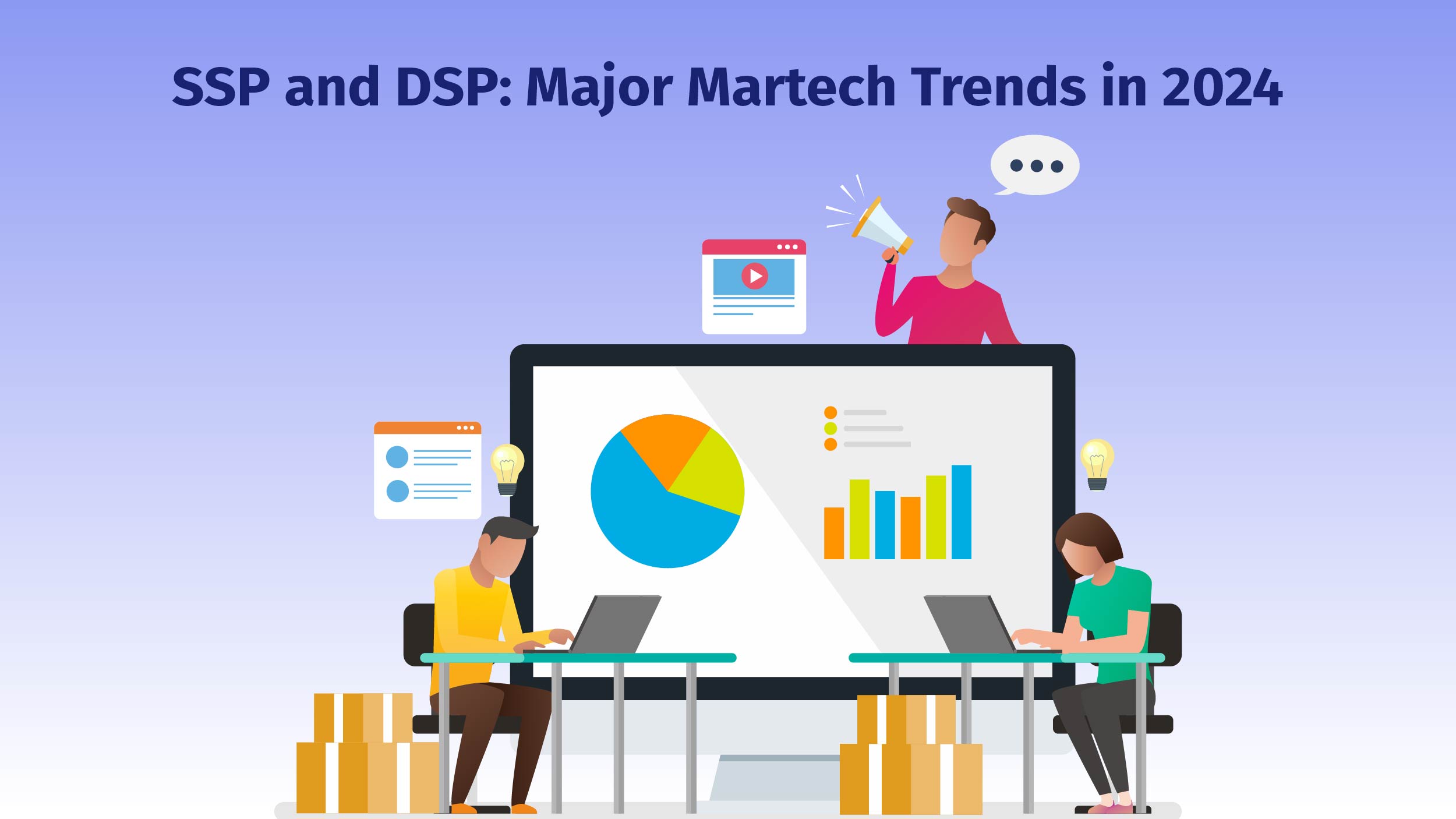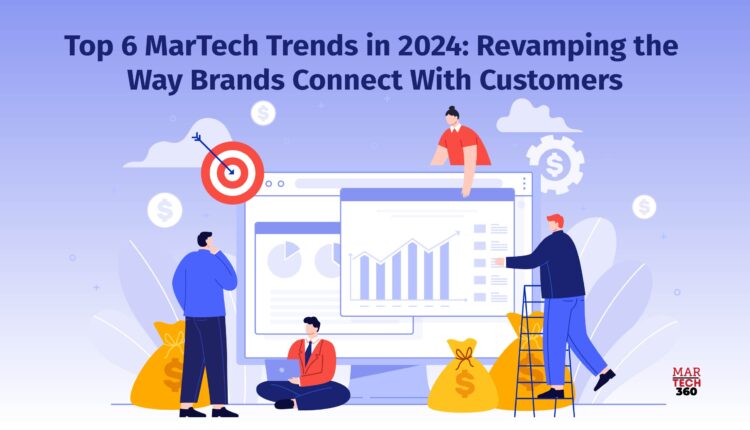2024 is a turning point for marketing tech trends. Marketers must adopt and integrate these advancements strategically. This means navigating through over 11,000 tools to maximize their marketing tech’s potential.
This brings us to the next question: What are the top martech trends in 2024? Well, that is exactly what we will break down in this blog, so let’s get started.
Top 6 MarTech Trends in 2024
The numerous tactics your business may be pursuing right now, such as boosting income, driving digital adoption, maximizing the value of your data, or improving your brand, should be evaluated in light of the criteria mentioned above. These martech trends in 2024 can prove beneficial for your company to stand out in this competitive market environment.
Expansion of Zero-party Data Collection
Big data now has more significance for enterprises than ever before. We now collect data differently as a result of global privacy regulations.
A significant marketing technology trend in digital marketing for the year 2024 is probably going to be businesses being more proactive with their data collection efforts. For instance, form design can be used to collect client information that could affect the release of your upcoming product or service. Forms can be kept short and to the point to keep users interested. Additionally, it is more successful at gathering data that is pertinent to conversions.
Video Content
Video-first content is gaining more emphasis in social media marketing since it can keep a viewer’s attention longer than static postings. To increase engagement and brand exposure among millennials and members of Generation Z, marketers are using bite-sized films, including TikToks and Instagram reels. Instagram intentionally changed its algorithm to promote reels and give video creators more attention than those who solely post still images.
Live streaming appears to be one of the great martech trends in 2024. Live streaming, when used in conjunction with influencers, enables potential customers to speak with supporters and experts who are familiar with the product, discuss its benefits and perhaps even some of its small drawbacks, and make a purchase while viewing the video.
SSP and DSP: Major Martech Trends in 2024
 The line dividing adtech companies that are buy-and-sell-facing has gotten blurry. One popular type of programmatic advertising that enables competing advertisers to compete for digital ad space is a self-service DSP (demand-side platform). Moreover, DSPs have been supporting supply-side platforms (SSPs) to enter into deals with media agencies for a long time now.
The line dividing adtech companies that are buy-and-sell-facing has gotten blurry. One popular type of programmatic advertising that enables competing advertisers to compete for digital ad space is a self-service DSP (demand-side platform). Moreover, DSPs have been supporting supply-side platforms (SSPs) to enter into deals with media agencies for a long time now.
Programmatic platforms will need to develop an ecosystem that connects customers, sellers, producers, data platforms, and everything in between by 2024, in addition to diversifying their revenue streams. SSPs should take into account deploying buy-side capabilities through customized DSP development.
Also Read: Why Every Company Needs Powerful Brand Storytelling [Tips Included]
Holographic Advertisements: Fusing the Real and the Virtual
Holograms have already appeared in science fiction and dystopian films. Though holographic technology is currently a reality and will remain so, this vision is now becoming a reality.
Holograms are the perfect marketing tool for businesses looking to promote their brand and raise consumer awareness in general. This advertising strategy allows users to display animated, interactive, and 3D images.
Martech trends in 2024 will bring out the “Genuinfluencers” age
In terms of their ability to shape consumer preferences, influencers have surpassed celebrities. Customers changed their minds about the ideal social influencer during the pandemic, requiring those who make a living off of social media to adapt. These influencers are becoming “genuinfluencers,” or corporate watchdogs, whose goal is to spread ideas rather than products.
One of the martech trends in 2024 that businesses seem to be embracing is a commitment to a “cause.” In 2024, business leaders need to embrace social responsibility as a genuine passion and stop viewing it as a means of gaining a competitive edge through collaborating with the proper influencers who promote ideals rather than merely selling stuff.
Alpha Generation
Currently, businesses looking to stay relevant and attract new customers are primarily targeting Generation Z. Gen Alpha, which includes everyone born after 2010, which is a younger group that is anticipated to substantially change the marketing environment.
Gen Alpha, the younger generation, will likely follow the habits of their millennial parents as they grow up. They’re used to engaging and consuming content on platforms like TikTok, YouTube, Roblox, and Minecraft. These sites provide them with opportunities to connect with friends and also make them aware of important issues like climate change. So, their online habits are shaping how they engage with the world.
3 Best MarTech Tools That Will Help You Grow in 2024
 Along with martech trends in 2024, we’ve also compiled a list of the top martech tools in 2024 that will help you grow in every manner, so you can start crossing off more tasks as you work toward being a marketing marvel.
Along with martech trends in 2024, we’ve also compiled a list of the top martech tools in 2024 that will help you grow in every manner, so you can start crossing off more tasks as you work toward being a marketing marvel.
Here are our suggestions for the top martech tools for growth in 2024, including enhanced lead generation, higher-quality data, higher engagement rates, and more.
Customer Data Platforms
Data is the foundation of all effective marketing strategies. A customer data platform (CDP) collects information about your customers, centralizes access to it, and keeps up-to-date, accurate user profiles. Many prosperous B2B marketers rely on Oracle Marketing Cloud and Cience, two capable CDPs, to help them create and maintain consumer lists with high-quality data, which is essential to improving the effectiveness of all marketing initiatives.
Customer Relationship Management System
To understand how customer relationships are developing in real time, a customer relationship management (CRM) system is necessary. The individuals in your company who are involved in these relationships (sales, service, etc.) can exchange insights about each customer via notes due to these technologies, which maintain track of customer interactions and data.
Content Management System
Using a CMS, you can control digital content across your martech ecosystem. Your marketing teams may create, edit, publish, and organize the material they use for a range of marketing pieces with a CMS in place, including brochures, videos, webinars, white papers, and more. A CMS also centralizes content access, making it simpler for your teams to work together while producing digital content. Optimizely and Hubspot are two examples of well-known CMS systems for B2B businesses.
Final Thoughts on MarTech Trends in 2024
MarTech trends in 2024 are likely to be more significant for advertisers than users. Users won’t notice much change in their ads as personalized content delivery remains robust. The focus is on improving the mechanisms beneath the surface, enhancing how ads target specific users.
A noteworthy exception is the growing emphasis on privacy in brand messaging. Brands aim to address user privacy concerns, potentially minimizing the adoption of ad blockers. Ultimately, advertisers need to stay proactive, adapting to the evolving MarTech landscape in 2024 to stay ahead of the curve.


Comments are closed.